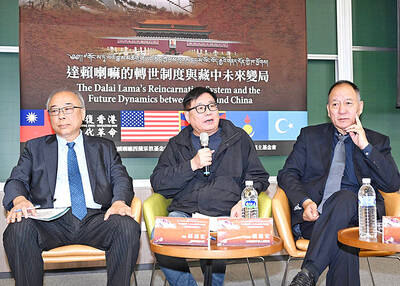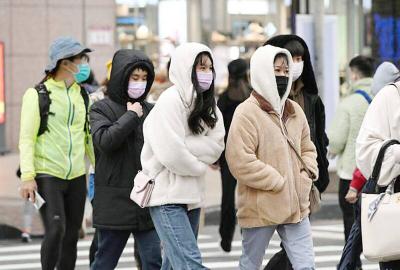The New Taipei City branch of the Taiwan Fund for Children and Families is calling for donations of NT$500 or NT$1,000 to help children from disadvantaged families pay for their stationery or additional cram school fees.
According to the fund’s database, more than 90 percent of college students from disadvantaged families have to work part-time while studying, while 30 percent of high-school and vocational high-school students also have to work part-time to help cover their tuition.
Of that 30 percent, 70 percent have to work part-time to cover family expenses, the fund said.
In terms of education resources, 43 percent of children and teens have no one at home to help with their homework, while another 61 percent of families have difficulty providing funds for cram schools, it said.
Citing the Executive Yuan’s statistics, the fund said the number of families comprised of just grandparents and grandchildren has increased by 40 percent over the past 10 years.
The fund’s New Taipei Office director Chen Mei-chun (陳美君) said that these families make up 10 percent of disadvantaged families.
As grandparents are unable to work full time due to their age, they boost their income by collecting recyclables, Chen said, adding that about 20 percent of grandparents in these families pass their days working odd jobs, while 40 percent have no income at all.
One such case involves a seven-year-old child, known as Hsiao-en (小恩), and her younger sister. Their grandparents are raising the two children by doing odd jobs, collecting recyclables and relying on social welfare grants, the fund said.
Hsiao-en was unable to regularly attend kindergarten and, as there is no one to help with homework, she is still unable to spell or count, the fund said, adding that she only recognizes a few characters in Mandarin Chinese.
Her grandmother is worried that she will not be able to keep up with other students in the future, the fund said.
The fund hopes the project will help children like these turn their lives around, it said.

ALIGNED THINKING: Taiwan and Japan have a mutual interest in trade, culture and engineering, and can work together for stability, Cho Jung-tai said Taiwan and Japan are two like-minded countries willing to work together to form a “safety barrier” in the Indo-Pacific region, Premier Cho Jung-tai (卓榮泰) yesterday said at the opening ceremony of the 35th Taiwan-Japan Modern Engineering and Technology Symposium in Taipei. Taiwan and Japan are close geographically and closer emotionally, he added. Citing the overflowing of a barrier lake in the Mataian River (馬太鞍溪) in September, Cho said the submersible water level sensors given by Japan during the disaster helped Taiwan monitor the lake’s water levels more accurately. Japan also provided a lot of vaccines early in the outbreak of the COVID-19 pandemic,

Kaohsiung Mayor Chen Chi-mai (陳其邁) on Monday announced light shows and themed traffic lights to welcome fans of South Korean pop group Twice to the port city. The group is to play Kaohsiung on Saturday as part of its “This Is For” world tour. It would be the group’s first performance in Taiwan since its debut 10 years ago. The all-female group consists of five South Koreans, three Japanese and Tainan’s Chou Tzu-yu (周子瑜), the first Taiwan-born and raised member of a South Korean girl group. To promote the group’s arrival, the city has been holding a series of events, including a pop-up

TEMPORAL/SPIRITUAL: Beijing’s claim that the next Buddhist leader must come from China is a heavy-handed political maneuver that will fall flat-faced, experts said China’s requirement that the Dalai Lama’s reincarnation to be born in China and approved by Beijing has drawn criticism, with experts at a forum in Taipei yesterday saying that if Beijing were to put forth its own Dalai Lama, the person would not be recognized by the Tibetan Buddhist community. The experts made a remarks at the two-day forum hosted by the Tibet Religious Foundation of His Holiness the Dalai Lama titled: “The Snow Land Forum: Finding Common Ground on Tibet.” China says it has the right to determine the Dalai Lama’s reincarnation, as it claims sovereignty over Tibet since ancient times,

Temperatures in some parts of Taiwan are expected to fall sharply to lows of 15°C later this week as seasonal northeasterly winds strengthen, the Central Weather Administration (CWA) said today. It is to be the strongest cold wave to affect northern Taiwan this autumn, while Chiayi County in the southwest and some parts of central Taiwan are likely to also see lower temperatures due to radiational cooling, which occurs under conditions of clear skies, light winds and dry weather, the CWA said. Across Taiwan, temperatures are to fall gradually this week, dropping to 15°C to 16°C in the early hours of Wednesday